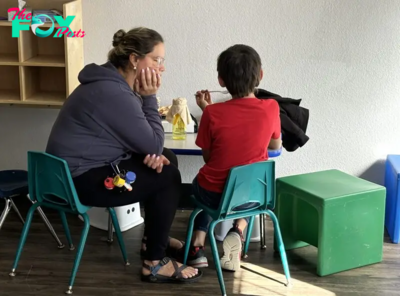Education
Colorado school districts have homework this summer: Get lead out of sinks and drinking fountains
A Colorado nonprofit is calling on school leaders statewide to repair or replace hundreds of sinks and drinking fountains, after its recent analysis showed many of those fixtures had high levels of lead in them, when testing was done on them more than a year ago.
Of the 2,201 water fixtures that tested positive for high levels of lead in the 10 largest Colorado school districts in May 2023, 1,417 still had not yet been fixed by May 1, according to a report released last week by CoPIRG, a Colorado nonprofit working to improve public health and safety statewide.
“Kids may be out of school for the summer, but schools have a lot of homework to do to ensure sources of lead-contaminated drinking water are addressed before kids return in the fall,” Kirsten Schatz, an advocate at the CoPIRG Foundation, said in a news release.
“We’re calling on schools to adopt a “Get The Lead Out” policy that eliminates lead from kids’ drinking water and gives all Colorado children a safer and healthier learning environment,” she said.
☀️ READ MORE
Is there a Colorado hotline that offers to pay callers to house migrants?
Steamboat Springs multisport phenom is graduating with 15 varsity letters
“Taking a nap is resistance”: Colorado poet organizes giant community nap with $7,500 grant
Decades ago, lead was commonly used in water service lines and fixtures that people drink from. But Congress banned the heavy metal from being used in water pipes in the late 1980s, after people realized corrosion can cause the chemical to seep into drinking water.
Lead is one of the most common and preventable causes of poisoning in children, and when they’re exposed to low levels of lead, kids can become inattentive, hyperactive and irritable, according to the American Academy of Child & Adolescent Psychiatry.
Children with higher levels of lead in their blood can have hearing loss or a hard time learning or reading. In the most severe cases, kids can have permanent brain damage or even die from lead poisoning, according to the child psychiatry organization.
A 2021 study found 72% of Colorado children younger than 6, who were tested, had levels of lead in their blood, well above the national rate of almost 51%.
States have been working over the years, on their own or with the federal government, to keep lead out of drinking water.
Schools that have water fountains or sinks with high levels of lead should swap out fixtures, replace components such as faucets, valves and supply lines, or install filters on all taps that dispense drinking water, the CoPIRG report suggests.
“Some of this aging infrastructure is just a fact of life but we’re at the point where we can do better and fix these things, so kids in schools and Coloradans in our homes can have safe water to drink,” Schatz said in an interview this week.
State law has been pushing testing for lead in water since 2022
In 2022, House Bill 1358 required officials to hire state-certified workers to test fixtures for lead at all public elementary schools, day care facilities and family child care homes on or before May 31, 2023. If state funding becomes available, middle school leaders are required to abide by that same requirement on or before Nov. 30.
Within 30 days of receiving those test results, the schools and child care facilities must publish those findings and any lead remediation plans on their websites, report the results to the Water Quality Control Commission and comply with many other safety requirements listed in the 2022 law.
If a test result shows a drinking water source has lead levels at 5 parts per billion or more, a child care center or school must notify all employees and childrens’ guardians and shut off that drinking water source until it is replaced or remediated, according to House Bill 1358, which allocated millions of dollars from the state’s general fund to help reimburse school districts for the remediation work.
The elementary schools and licensed day care facilities that were required to test for lead under House Bill 1358 teach or take care of almost 600,000 kids across Colorado.
The number of fixtures in the 10 largest school districts that had fixtures with lead levels at 5 parts per billion or more varied across the state, ranging from zero fixtures in one school district to hundreds in others, according to the CoPIRG report, which analyzed statewide data pulled on May 1.
Aurora Public Schools, Denver Public Schools, Cherry Creek Public Schools and Jeffco Public Schools were among the 10 largest school districts with the highest percentage of fixtures with lead remediation work reported as still underway, according to the CoPIRG report, which analyzes statewide data it pulled on May 1.
Those school districts still needed to remediate more than 70% of their contaminated fixtures on that date, according to the report.
Adams County School District 12, Poudre School District and the Boulder Valley School District had successfully remediated more than half of the tainted fixtures that required remediation by May 1, according to the report.
-

 Education3d ago
Education3d agoWhat would it mean if President-elect Trump dismantled the US Department of Education?
-

 Education6d ago
Education6d agoPhiladelphia students have a new reading and writing curriculum − a literacy expert explains what’s changing
-

 Education6d ago
Education6d agoWhy school police officers may not be the most effective way to prevent violence
-

 Education1w ago
Education1w agoCampus diversity is becoming difficult to measure as students keep their race and ethnicity hidden on college applications
-

 Education1w ago
Education1w agoFederal judge rules that Louisiana shalt not require public schools to post the Ten Commandments
-

 Education1w ago
Education1w agoCampuses are ground zero in debates about antisemitism − but that’s been true for 100 years
-

 Education1w ago
Education1w agoSocioeconomic status explains most of the racial and ethnic achievement gaps in elementary school
-

 Education1w ago
Education1w agoMothers, metaphors and dyslexia: What language reveals about the challenges of a child’s learning disability



























